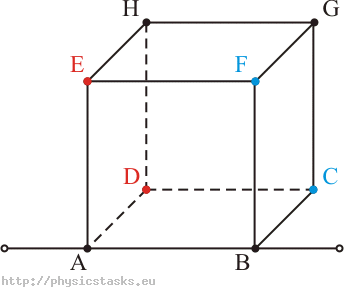HELP

A Question that I need help for
A cube has its vertex named A,B,C,D,E,F,G,H. All of them are real positive numbers. A near sum is the sum of all numbers of the vertexes that connects to the original vertex. The value of the near sums are (3,6,9,12,15,18,21,24). If the value of the near sum of A is 1, then what is the value of the near sum of F?
No vote yet
1 vote
Easy Math Editor
This discussion board is a place to discuss our Daily Challenges and the math and science related to those challenges. Explanations are more than just a solution — they should explain the steps and thinking strategies that you used to obtain the solution. Comments should further the discussion of math and science.
When posting on Brilliant:
*italics*or_italics_**bold**or__bold__paragraph 1
paragraph 2
[example link](https://brilliant.org)> This is a quote# I indented these lines # 4 spaces, and now they show # up as a code block. print "hello world"\(...\)or\[...\]to ensure proper formatting.2 \times 32^{34}a_{i-1}\frac{2}{3}\sqrt{2}\sum_{i=1}^3\sin \theta\boxed{123}Comments
Just to clarify, is 1 the near sum of A or the value of A? Because it seems that there are exactly 8 near sums you listed out, none of which are 1.
Log in to reply
@Steven Yuan Probably a typo ("near sum of A is 12/15/18"?).
@Alfian Edgar Notice that the near sums have complements which sum to 27, ie the near sum of a vertex is 27 minus the near sum of the opposite vertex; shouldn't be too hard to prove. Then, nearsum(F)=27−nearsum(A).
But if A=1, then I don't know. My brain isn't working today.
Log in to reply
lol, then nearsum(F)= 27-3 = 24
I'm sorry, what I meant was near sum of a=3, the original question was using the average of the near sums lol. It's my mistake.
Log in to reply
Then hopefully my reply to Steven will help you out a bit. Good luck and happy solving!